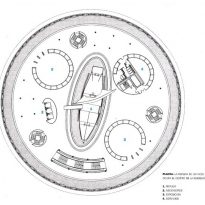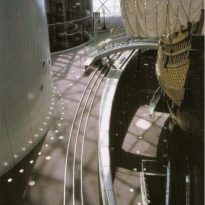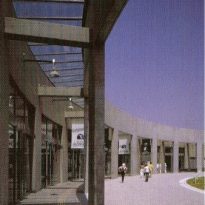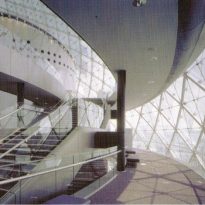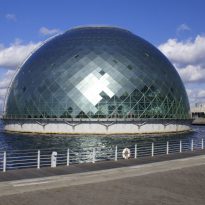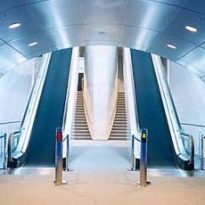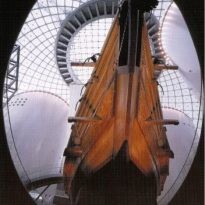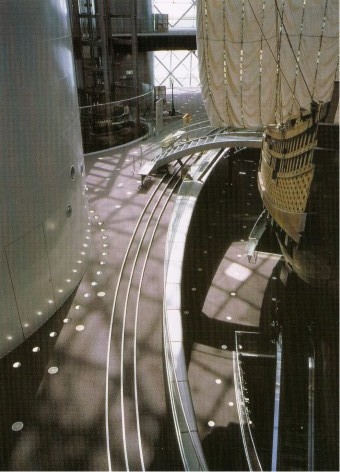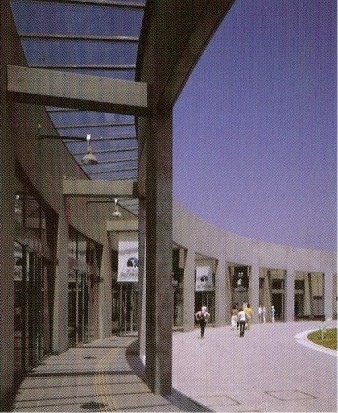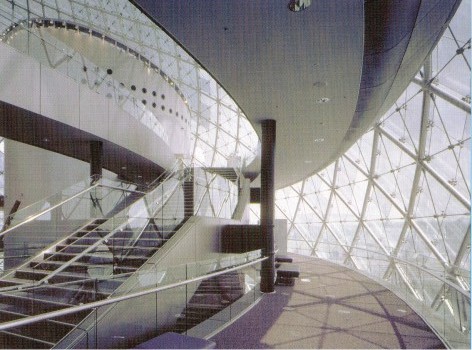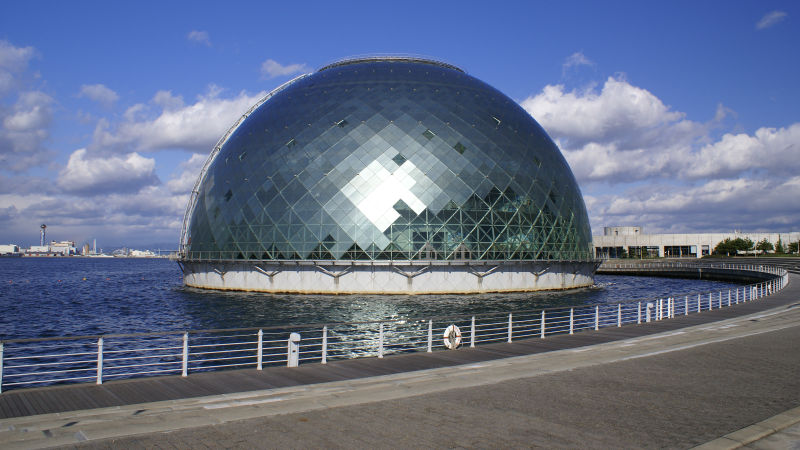Osaka Maritime Museum

Introduction
The Osaka Maritime Museum is recognized as part of a new generation of museums. Designed by French architect Paul Andreu and his associates, was built to display a large replica of the old boat as the main attraction, allowing covered and look from all angles, including from below.
This is a great piece of engineering, because it is a highly seismic zone.
Situation
The dam is located in Osaka, on the edge of the bay, on the sea.
Meaning
The museum is a large glass hemisphere of 40 meters in height that seems to float on water.
Even taking this unusual shape, the building is related to the environment through transparency. From afar is recognizable by its particular geometry. Their faces almost transparent strip the interior to merge with the landscape, while hugging the curves space.
Admission to the museum is a building on the land. The connection between this building and the large area is through a tunnel under the water.
The architects created a double play with the environment: the volumes have a formal counterpoint to the buildings surrounding it, while the materials, light and transparency to encourage dialogue.
Spaces
The area surrounding the interior spaces of the museum.
There are four floors of exhibition.
The boat, the main attraction of the museum is located in the center and is surrounded by stairs and special exhibition rooms.
Access the building, located on the ground, is a semicircular structure. There is the entrance hall and space for offices and administration of the museum.
Structure
The hemisphere is put together on a large metal grill, with thin plates of glass that are sealed with silicone directly.
The skin of the building consists of two glass panels that enclose a layer of galvanized steel and perforated. According to the trajectory of the sun, the density of these holes ranges to avoid the direct impact of lightning. The panels will shrink as they reach the top of the hemisphere.
The building has an internal structure consisting of three annular beams. The beams provide the force structure of the dome.
The museum’s vault weighs 1200 tons. Was planned to test earthquakes.
It was also designed to provide air conditioning.




